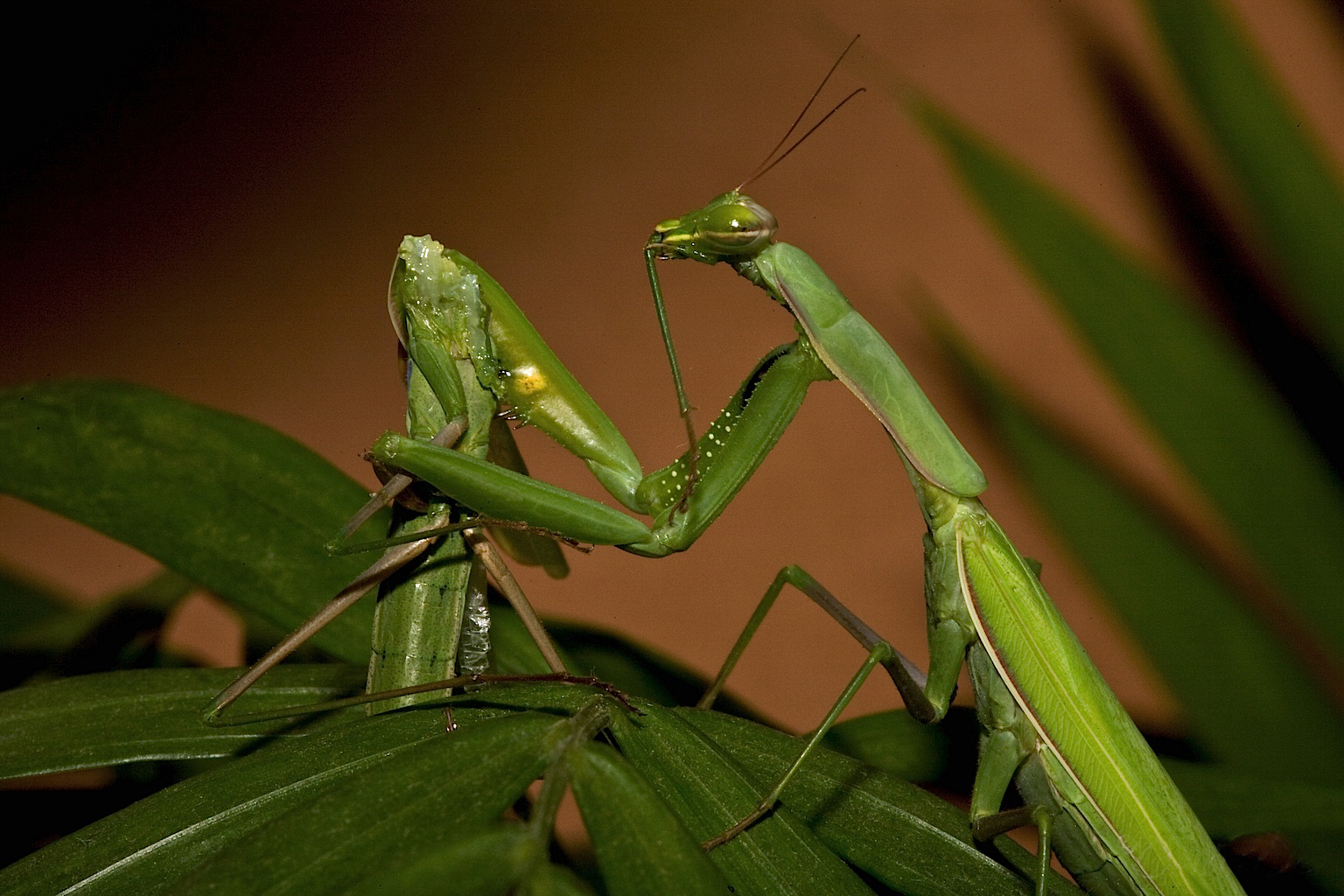Sexual Cannibalism: Blood Lust
Biology 342 Fall 2012
by Ben Goggin and Kata Martin
| Home | Phylogeny | Ontogeny | Mechanism | Adaptation | References | Course Home |
Sexual Cannibalism
Sexual Cannibalism is a behavior exhibited primarily by insects and arachnids, where one partner (usually the female) kills the other before, during or after copulation. In some species cannibalism involves ingestion of the killed animal, while in others cannibalism simply refers to the murder of the same species. The behavior has been intriguing to many scientists not only because of it’s sensational and violent nature, but also because of it’s apparent maladaptive value for the partner that is killed and questionable value for the killer.

Each question allows the study of a certain behavior from a different level of biological science.
- The first is ‘mechanism’. this provides a proximate explanation of the behavior based on physical and chemical characteristics of the animal.
- The second is ‘adaptive value’ or ‘function’. This describes what value the behavior contributes to the animals overall fitness, explaining how the behavior was preserved through time.
- The third is ‘ontogeny’ or ‘development’, which describes how the behavior develops, including genetic and environmental influences.
- The fourth is ‘phylogeny’ or ‘evolution’, which describes the evolutionary history of the behavior and how the behavior has come to be today.